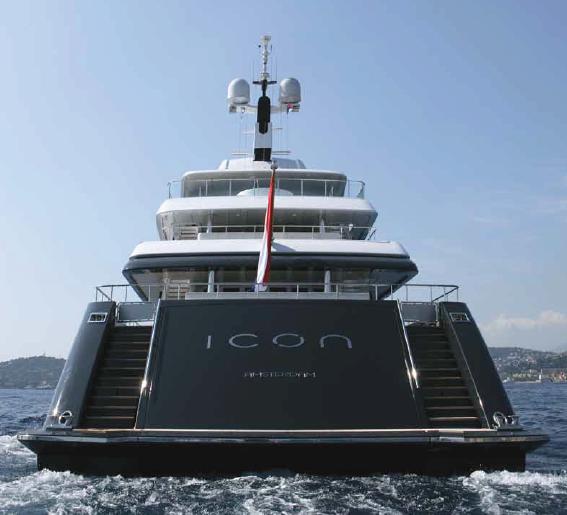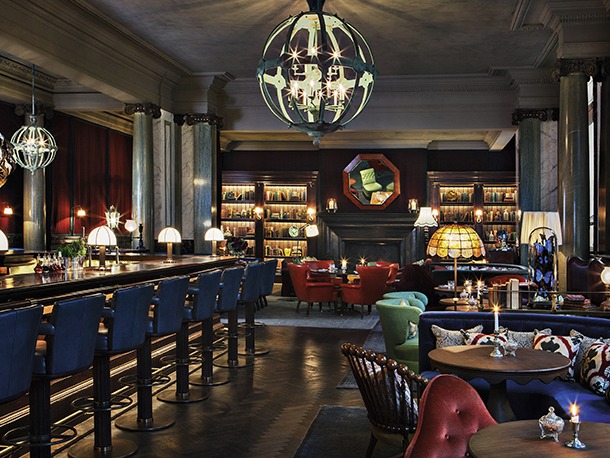
Stephan Vitus, project development manager of Icon Yachts, talks to Jayne Flannery about the radical new approach to building the iconic super yachts that the company has pioneered.
When IconYachts was created in 2006, its founders, Wim Koersvelt and Jen Wartena, had a clear vision for the Netherlands-based business. Firstly, they wanted to apply their many combined years of experience to the highest end of the market for luxury super yachts. But in a radical departure from the traditional yard-based approach, they set out to challenge convention and apply a totally new approach to building the finest yachts afloat.
“The principle on which we founded Icon Yachts was to develop a technical platform hull that any exterior and interior design could be built upon within the limits of technical feasibility and naval architecture boundaries,” explains Stephan Vitus, Icon Yachts’ project development manager. “Although it is an astonishingly simple and obvious concept, it was a revolutionary approach towards a market that demands exceptional levels of customization and something which had never been tried before.”
For Icon’s clients, it means a totally unique signature in terms of styling, design and finish—but at a much lower cost and with much shorter lead times than other yacht builders can offer. “Essentially, what we do differently is to move processes, materials handling and men hours off the ships into more efficiently equipped and located workshops or factories, which can be on-site or at co-maker and supplier facilities,” explains Vitus. “The formula we apply is termed ‘modular engineering and construction’, which means that all the components of a super yacht can be broken down into pre-engineered sub assemblies that can be constructed, primed, tested and in some instances pre-certified before final assembly. These modules are then ready to drop into the ship when needed using the just-in-time principle.”
This lean approach to yacht building is complemented by an unusually open and flat management structure which Vitus believes is equally important. “We have exceptionally fast reaction times if the unexpected occurs. There is no need to penetrate six layers of management to get a decision and our structure allows us to be very flexible in the way we manage projects. For example, a corporation which already has existing yachts will want a different project management style to a yacht destined for a single private client. However, what both will demand is a very close partnership based on a high level of trust and open and detailed discussion to inform good decision-making.”
Nothing illustrates the success of the formula better than the ‘Baton Rouge’. This was only the second super yacht built by Icon and was a 2011 finalist for the World Super Yacht Awards held annually by Boat International Media in London. At 1,423 gross tons and measuring 62.5 metres, Baton Rouge is a six-deck full displacement motor yacht with innumerable customized features. Offering an incredible sense of space, the yacht’s features include a pool with jet stream, a dedicated sundeck (which converts to a party deck) and a beach club lounge at sea level. Internationally renowned designers Redman Whitely Dixon were behind the sumptuous interior and Tim Heywood designed the yacht’s exterior. “Baton Rouge is our greatest achievement to date in terms of the strength of our brand and reputation. It gave us international recognition for the quality of our work,” Vitus declares.
A typical project takes approximately 28 months to complete; and to date, three new yachts of 62.5 metres have been sold. Two are already at sea and the third is scheduled for delivery early in 2012. Although most yachts sold have been in the 60 metre range, Vitus is keen to point out that Icon's strength stretches from 40 to 150 metres and from platform to completely custom projects to any client design. To illustrate the point, he adds that a 42 metre yacht is due to be handed over in June 2011. “Like most other yards, we have had to adapt to market changes and this has been done proactively, by broadening the spectrum of projects with regards to size but also with regards to type. For example, we are currently tendering for contracts ranging from 40 to 110 metres, with a concentration in the just-below 500 grt (approximately 44 to 50 metres) and 3,000 grt (approximately 80 to 90 metres) volume and size range.”
The shipyard at Harlingen has many unique features, such as a 150 by 30 metre fully enclosed dry dock assembly building with a mast clearance of 28 metres and open deep water access. Vitus explains that the company is eager to leverage this asset more fully, with refits a growing element of the business: three refit projects are currently in progress.
“We had always planned to offer our clients high level yacht service facilities alongside the new construction business because of our convenient shipyard location and the high level of facilities available,” he continues. “Now, we also offer these facilities to other prestigious builders of sailing and motor yachts who want to commission and service their vessels here. Partnership projects with commercial shipyards have won us contracts to co-construct three large special purpose vessels stretching ahead into 2014.”
Other ship yards have begun to emulate the modular approach pioneered by Icon, but Vitus is not concerned. “We are at the forefront of the super yacht market and we will stay there because we are a market leader, not a follower. For example, we are already well ahead in the application of next generation technologies to our yachts. Detailed plans have been drawn up for electro-diesel propulsion systems which generate better energy efficiency and we are already installing new interior materials and LED lighting systems which require a smaller generator and use less diesel. Energy efficiency and ecological sustainability are becoming much more important to buyers,” he states.
“It is a challenging and changing world and our continued success shows that we are very capable of adapting to new demands. The economic crisis has made clients look much more carefully at the return on their investment and placed a greater emphasis on versatility so that a yacht has to be compatible with many more usage situations than might have been the case five years ago. Clients are becoming more discerning—and as ship builders and designers, we have to respond to that call,” he concludes.
DOWNLOAD
 IconYachts-EMEA-Jun11-Bro-s.pdf
IconYachts-EMEA-Jun11-Bro-s.pdf













